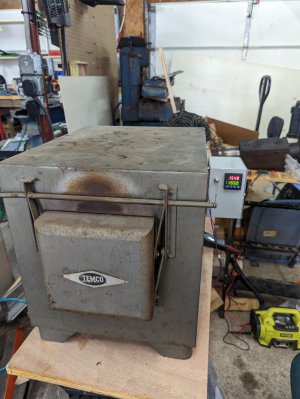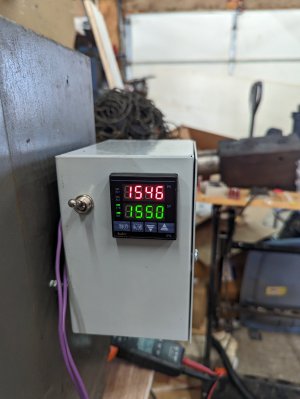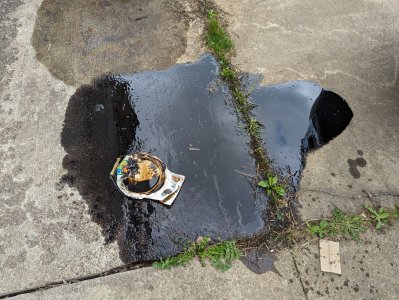I have posted before about my heat treat oven rebuild and have been messing around with it today.


This has raised a few questions I thought I'd ask about heat treating In general:
Where do you find info on how to heat treat and temper various metal?
I have seen some documents that state: "Raise heat to 1550 at a rate of no more than 400 per hour".
How important is that to do?
What happens if I chuck a 70 deg part right into the heated oven?
The specs usually say "30 mins per inch", what happens if I leave it in longer?
They also usually say to temper before the part drops below 125 deg right after heat treating. Does it make a difference if I let the part fully cool first? (My oven goes up to 1550 in 45 min, but DOWN to 400 takes several hours. Even with the door open)
I have attached a pdf I found on the topic so you can see what I'm referring to.
Also, below is why I do not recommend quenching in a PLASTIC bucket! LOL!



This has raised a few questions I thought I'd ask about heat treating In general:
Where do you find info on how to heat treat and temper various metal?
I have seen some documents that state: "Raise heat to 1550 at a rate of no more than 400 per hour".
How important is that to do?
What happens if I chuck a 70 deg part right into the heated oven?
The specs usually say "30 mins per inch", what happens if I leave it in longer?
They also usually say to temper before the part drops below 125 deg right after heat treating. Does it make a difference if I let the part fully cool first? (My oven goes up to 1550 in 45 min, but DOWN to 400 takes several hours. Even with the door open)
I have attached a pdf I found on the topic so you can see what I'm referring to.
Also, below is why I do not recommend quenching in a PLASTIC bucket! LOL!


